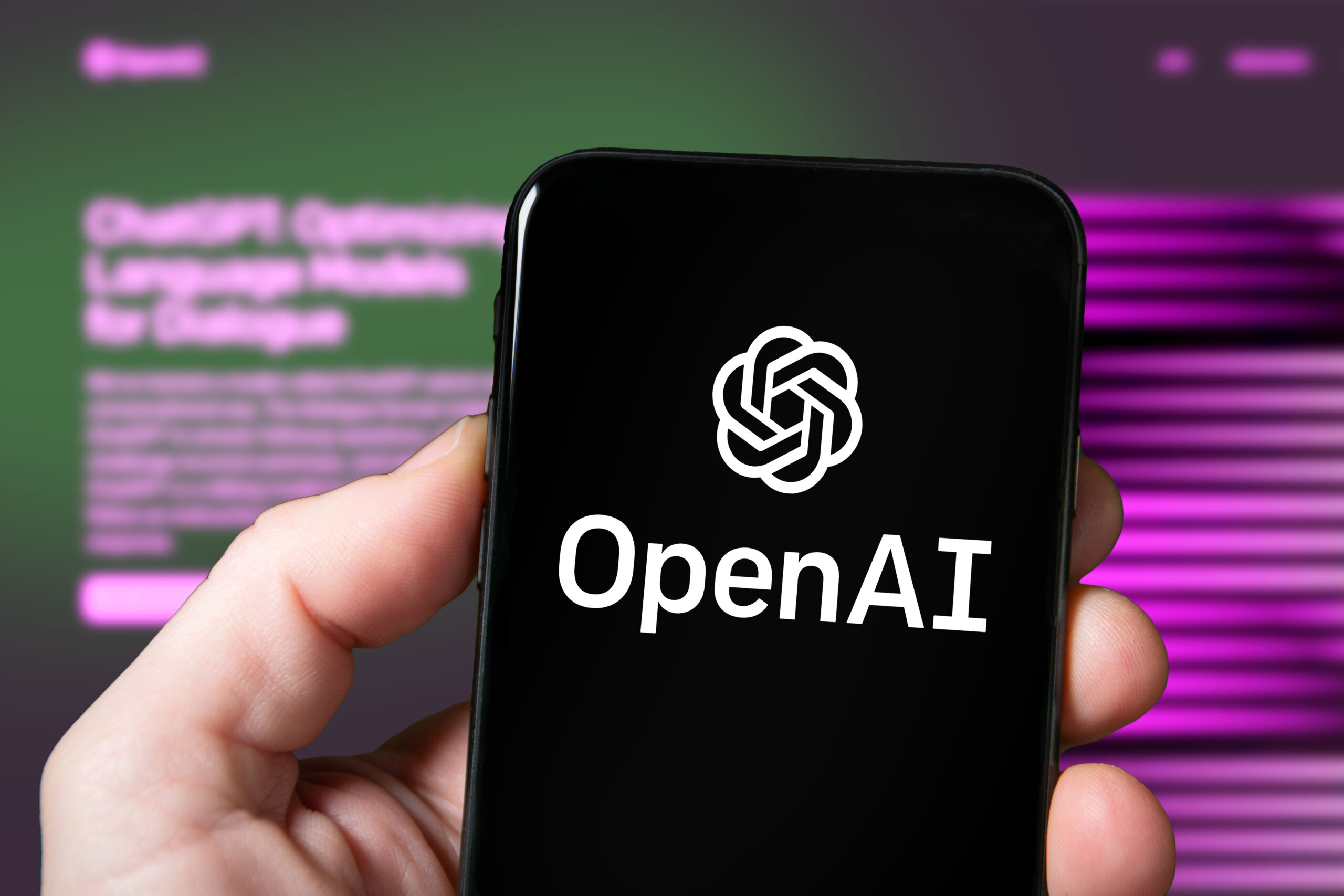As you navigate the rapidly evolving landscape of artificial intelligence, OpenAI’s watermarking initiative demands your attention. The company is testing a watermarking feature for images generated by its ChatGPT-4o model, a move that could significantly impact how you interact with and trust AI-generated content. This development addresses the growing concern over the authenticity and potential misuse of AI-created visuals. As a user or professional in the field, you’ll want to understand the implications of OpenAI’s watermarking, its potential effectiveness, and how it fits into the broader context of AI content provenance. This article will guide you through OpenAI’s approach and its potential consequences for the future of AI-generated imagery.
OpenAI’s Watermarking Approach: A Safeguard Against AI Image Misuse

In response to the growing prevalence of AI-generated images, OpenAI has taken a proactive stance by implementing a watermarking feature for visuals created by its ChatGPT-4o model. This innovative approach serves as a crucial step in enhancing content authenticity and mitigating the potential misuse of AI-generated imagery.
The Mechanics of OpenAI’s Watermarking
OpenAI’s watermarking system appears to be primarily targeted at free-tier users, with indications that paid subscribers may have the option to save images without these digital signatures. This strategic decision balances the need for transparency with user experience, particularly for those who rely on AI-generated visuals for professional purposes.
Aligning with Broader Industry Standards
OpenAI’s watermarking initiative dovetails with its broader efforts to implement content provenance measures. By embedding metadata that complies with the Coalition for Content Provenance and Authenticity (C2PA) standards, OpenAI is taking steps to ensure that AI-generated content can be easily identified and traced back to its source.
Challenges and Limitations
While watermarking represents a significant step forward, it’s important to note that this approach is not without its challenges. Metadata can potentially be stripped or altered, and visual watermarks might be removed or obscured by determined users. These limitations underscore the ongoing need for evolving solutions in the rapidly advancing field of AI-generated content.
Combating the Mimicry of Studio Ghibli’s Iconic Art Style
The rise of AI-generated visuals mimicking Studio Ghibli’s distinctive art style has sparked concerns about authenticity and artistic integrity. You might wonder how OpenAI’s watermarking initiative addresses this specific challenge.
Preserving Artistic Legacy
Studio Ghibli’s enchanting aesthetics, characterized by lush landscapes and whimsical characters, have captivated audiences worldwide. As AI models become more adept at replicating this style, it’s crucial to distinguish between genuine Ghibli art and AI-generated imitations. OpenAI’s watermarking feature aims to create a clear delineation, ensuring that the studio’s unique visual language remains protected.
Balancing Innovation and Respect
While AI-generated art inspired by Ghibli’s style can be seen as a form of homage, it also raises questions about copyright and artistic attribution. By implementing watermarks, OpenAI encourages users to approach AI-generated content with transparency, fostering an environment where innovation coexists with respect for original creators.
Educating Users and Viewers
The watermarking initiative serves an educational purpose as well. As you encounter AI-generated images mimicking Ghibli’s style, the presence of a watermark prompts reflection on the nature of AI-created art. This awareness can lead to more informed discussions about the role of AI in creative processes and the value of human-made art in an increasingly AI-driven world.
Balancing Transparency and User Experience: OpenAI’s Cautious Implementation
OpenAI’s approach to implementing watermarking for AI-generated images reflects a delicate balance between transparency and user satisfaction. The company’s cautious strategy stems from several key considerations that shape its decision-making process.
User Acceptance and Potential Backlash
OpenAI recognizes the importance of user acceptance in rolling out new features. The company’s hesitation to implement watermarking for text outputs earlier stemmed from concerns about potential user backlash. This caution extends to image watermarking, as OpenAI carefully weighs the benefits of content authenticity against possible negative user reactions.
Tiered Implementation Strategy
The current testing phase for image watermarking appears to target free-tier users, while paid subscribers may have the option to save images without watermarks. This tiered approach allows OpenAI to gauge user response and refine the feature before a wider rollout. It also provides a potential incentive for users to upgrade to paid subscriptions.
Addressing Stigmatization Concerns
OpenAI’s careful implementation considers the potential stigmatization of watermarked content, particularly for non-native English speakers. By testing the feature gradually, the company can assess its impact on different user groups and make necessary adjustments to ensure fairness and inclusivity.
Evolving Technology and Standards
As AI-generated content becomes more prevalent, OpenAI’s watermarking efforts represent a step toward responsible AI deployment. The company’s alignment with C2PA standards for metadata embedding demonstrates its commitment to industry-wide solutions for content provenance. However, OpenAI must continually adapt its approach as technology evolves and new challenges emerge in the rapidly changing landscape of AI-generated content.
Metadata, Watermarks, and the Challenges of Content Provenance
The Rise of Digital Fingerprinting
In the age of AI-generated content, ensuring authenticity has become a paramount concern. Metadata and watermarks serve as digital fingerprints, helping to trace the origin of images and text. These tools are crucial in combating misinformation and protecting intellectual property. However, their implementation is not without challenges.
The Dilemma of Visibility
Watermarks present a delicate balance between transparency and user experience. Visible watermarks can deter misuse but may also detract from the aesthetic appeal of generated content. Invisible watermarks, while less obtrusive, can be more easily removed or altered. This leaves content creators and platforms in a quandary: how to protect content without compromising quality?
The Metadata Conundrum
Embedding metadata, such as C2PA standards, offers a promising solution for content provenance. Yet, this approach faces its own set of hurdles. Metadata can be stripped or manipulated, potentially rendering it ineffective. Moreover, ensuring widespread adoption and compatibility across various platforms and devices remains a significant challenge in the digital ecosystem.
Balancing Act: User Acceptance and Ethical Considerations
As OpenAI and other AI companies navigate these waters, they must consider user acceptance and ethical implications. The stigma associated with watermarked content, especially for non-native speakers, highlights the need for a nuanced approach. Finding the right balance between transparency, user experience, and ethical considerations will be key in shaping the future of AI-generated content authentication.
The Future of Responsible AI Deployment: OpenAI’s Evolving Strategies
Balancing Transparency and User Experience
OpenAI’s recent testing of watermarking for AI-generated images represents a significant step toward responsible AI deployment. This initiative reflects the company’s ongoing efforts to address the challenges posed by increasingly sophisticated AI-generated content. By implementing visual watermarks and exploring metadata embedding compliant with C2PA standards, OpenAI aims to enhance content authenticity and combat potential misuse.
Challenges and Considerations
While watermarking offers a potential solution, it’s not without its challenges. The effectiveness of such measures remains debatable, as visual watermarks can be removed or obscured, and metadata can be stripped or altered. Additionally, OpenAI must carefully navigate user acceptance, as evidenced by their previous hesitation to implement text watermarking due to concerns over backlash and potential stigmatization.
Adapting to a Changing Landscape
As AI-generated content becomes increasingly prevalent, OpenAI’s strategies must continue to evolve. The company’s cautious approach, exemplified by the current testing phase for image watermarking, demonstrates a commitment to finding the right balance between transparency and user experience. Moving forward, OpenAI will likely need to explore innovative solutions that address the complex interplay between technological capabilities, ethical considerations, and user needs in the rapidly advancing field of AI.
Summing It Up
As you navigate the evolving landscape of AI-generated content, OpenAI’s watermarking initiative represents a significant step toward transparency and responsible AI deployment. While challenges in enforcement and user acceptance persist, this approach demonstrates a commitment to addressing concerns about content authenticity and misuse. As a consumer or creator of digital content, it is crucial to stay informed about these developments and consider their implications for your work and online interactions. By understanding the nuances of AI-generated imagery and the efforts to regulate it, you can make more informed decisions about the content you encounter and create in this rapidly changing digital ecosystem.
More Stories
Qwen3: Alibaba’s Open-Source AI Pushes the Boundaries of Hybrid Reasoning
Alibaba’s open-source model, Qwen3, marks major progress in hybrid reasoning. This new model blends traditional AI with dynamic reasoning, creating a flexible and efficient tool for developers globally.
Pony.ai Accelerates Toward Profitability with Strategic Fleet Expansion and Cost Optimization
Pony.ai is making strategic moves to accelerate its path toward profitability. As you navigate the complexities of this cutting-edge industry, it is crucial to understand how this Chinese company positions itself for success.
Alibaba’s $53 Billion AI and Cloud Investment: A Strategic Leap into the Future
As technology rapidly evolves, Alibaba’s $53 billion investment in AI and cloud computing deserves your full attention. This strategic move puts the Chinese e-commerce giant at the leading edge of a technological revolution.
PAL e-Wallet: Philippine Airlines’ Digital Leap into Seamless Travel Payments
Philippine Airlines (PAL) has taken a significant step forward with the launch of its PAL e-Wallet. This innovative digital platform represents a leap into the future of seamless travel payments, designed to enhance your journey from booking to boarding.
Avatars Ascend: YouTube’s Virtual Influencers Redefine Digital Fame
In the ever-evolving landscape of digital media, a new phenomenon is reshaping the concept of online celebrity. Virtual influencers, AI-generated or digitally animated personas, are rapidly ascending the ranks of YouTube stardom.
CrowdStrike Elevates Cloud Defense with Real-Time AWS IAM Identity Center Threat Detection
As you navigate the complex landscape of cloud security, staying ahead of evolving threats is paramount. CrowdStrike’s latest enhancement to its Falcon Cloud Security platform introduces real-time threat detection for AWS IAM Identity Center, elevating your defense capabilities to new heights.


